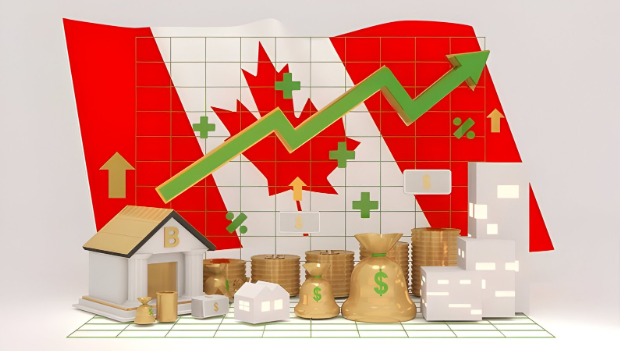Canada’s economic landscape has seen both impressive achievements and significant hurdles in recent years. As a country rich in natural resources, advanced technology, and a well-educated workforce, Canada holds a unique position in the global market. But how does Canada tackle current economic challenges while also unlocking growth opportunities? Let’s dive into Canadian economic growth trends and explore how the nation can navigate the road ahead.
The Current Economic Climate in Canada
Canada has long been known for its stable economy, boasting a strong banking system and a wealth of natural resources. However, in recent years, external factors like global supply chain disruptions, inflationary pressures, and shifts in international trade have created uncertainty. Despite these challenges, Canada has proven its resilience, showing robust recovery signs following the COVID-19 pandemic.
The question now is: how does Canada continue to grow amidst these pressures? Pritish Kumar Halder, a renowned economist, noted that “Canada’s economic growth trends are shaped not only by its internal policies but by its ability to adapt to external changes.”
Inflation: A Persistent Challenge
One of the primary concerns today is inflation. Rising costs of goods and services have put pressure on Canadian households, reducing purchasing power and creating uncertainty for businesses. However, there are silver linings. The Bank of Canada’s measures to control inflation through interest rate adjustments have begun to stabilize the market, albeit slowly.
On a positive note, inflation is not unique to Canada. Global factors, such as rising energy prices and post-pandemic recovery efforts, have affected most developed economies. Canada’s strong financial institutions have positioned the country well to weather this storm.
As a humorous take, Canadians might joke: “At least our moose and maple syrup haven’t inflated in size—just their price!” But the serious question remains: how can we curb inflation while ensuring growth?
Canadian Economic Growth Trends: What’s Next?
Canadian economic growth trends have shown that while traditional industries like natural resources and manufacturing continue to be key drivers, sectors such as technology, renewable energy, and digital services are now at the forefront. As the world shifts towards a green economy, Canada is poised to become a leader in this space, leveraging its abundant renewable resources.
In particular, provinces like Ontario, Quebec, and British Columbia are experiencing growth in tech hubs, start-up ecosystems, and innovation centers. This shift towards technology is not just a trend; it’s an opportunity for Canada to diversify its economic base and reduce reliance on fossil fuels.
As Pritish Kumar Halder states, “Canada’s economic future lies in its ability to innovate while maintaining its competitive edge in traditional industries. Growth can’t come from sticking to the status quo.”
Trade and Global Positioning
Canada’s economic well-being is heavily tied to its trade relationships, particularly with the United States, its largest trading partner. Recent trade agreements like the USMCA (United States-Mexico-Canada Agreement) ensure Canada’s access to key markets, but there is growing competition globally.
To navigate this, Canada must balance its traditional reliance on natural resources with investments in high-value sectors such as pharmaceuticals, aerospace, and digital technology. Expanding trade partnerships with emerging markets in Asia and Africa also presents opportunities for diversification.
But here’s the tricky part: as much as we’re looking at the bigger picture globally, how do we ensure that Canada doesn’t become too dependent on one or two industries?
Environmental Concerns and Sustainable Growth
A growing challenge for Canadian economic growth is the environment. While industries like oil and gas have been significant contributors to the economy, there’s increasing pressure from both domestic and international audiences to transition to cleaner, more sustainable energy sources. Canada, home to vast natural beauty and resources, has a responsibility to lead in green innovation.
Opportunities abound in renewable energy sectors like hydroelectric, wind, and solar power. Canada’s vast natural landscape offers incredible potential for sustainable energy generation, and with the right investments, the country could become a global leader in this field.
On a lighter note, Canadians often joke: “If we can harness the power of our cold winters, we’d never run out of energy!” But in reality, this is no joke—sustainable energy could be the key to long-term economic success.
Investment in Education and Innovation
As the world becomes more digitally connected, Canada’s economic growth trends show the need for greater investment in education and innovation. The government’s focus on building a knowledge-based economy is encouraging, but there’s more to be done. Investing in STEM (Science, Technology, Engineering, and Math) education will ensure that Canada remains competitive on the global stage.
In particular, fostering innovation through research and development is critical. By encouraging partnerships between universities, private enterprises, and government institutions, Canada can lead in fields such as artificial intelligence, biotechnology, and advanced manufacturing.
Conclusion: Opportunities Amidst Challenges
Despite facing challenges like inflation, trade uncertainties, and environmental concerns, Canada’s economic landscape holds immense potential. By focusing on innovation, diversifying its economic base, and embracing sustainable growth, Canada is well-positioned for future success. Canadian economic growth trends point towards an optimistic future, as long as the country can balance the pressures of today with the opportunities of tomorrow.
As Pritish Kumar Halder aptly puts it, “Canada’s economy is at a crossroads. The choices we make today will define our position on the global stage tomorrow.”
In summary, while there are bumps in the road, Canada’s resourcefulness, innovation, and commitment to sustainability mean that the future looks bright—so long as the right steps are taken. After all, as Canadians like to say, “We’ve weathered worse storms before!”






